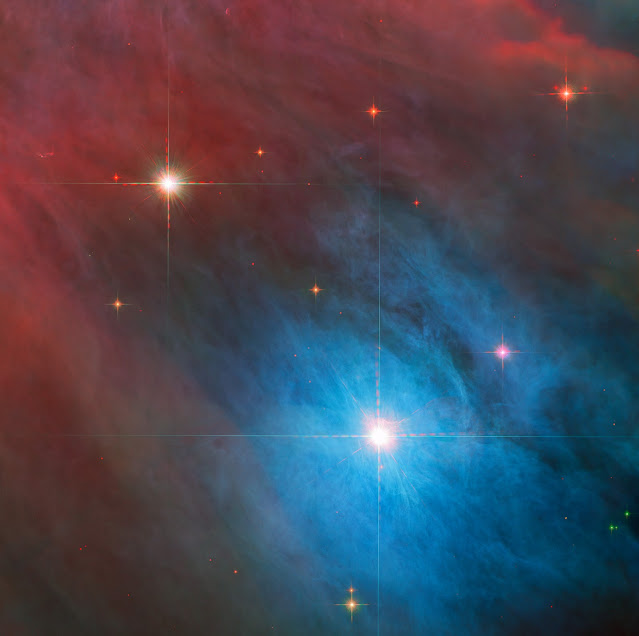Molecular Cloud Chameleon I | James Webb Space Telescope
This image by the NASA/European Space Agency/Canadian Space Agency James Webb Space Telescope’s Near-InfraRed Camera (NIRCam) features the central region of the Chameleon I dark molecular cloud, which resides 630 light years away. The cold, wispy cloud material (blue, center) is illuminated in the infrared by the glow of the young, outflowing protostar Ced 110 IRS 4 (orange, upper left). The light from numerous background stars, seen as orange dots behind the cloud, can be used to detect ices in the cloud, which absorb the starlight passing through them.
Image Description: A large, dark cloud is contained within the frame. In its top half it is textured like smoke and has wispy gaps, while at the bottom and at the sides it fades gradually out of view. On the left are several orange stars: three each with six large spikes, and one behind the cloud which colors it pale blue and orange. Many tiny stars are visible, and the background is black.
A molecular cloud is a vast interstellar cloud of gas and dust in which molecules can form, such as hydrogen and carbon monoxide. Cold, dense clumps in molecular clouds with higher densities than their surroundings can be the sites of star formation if these clumps collapse to form protostars.
Credit: NASA, ESA, CSA, and M. Zamani (ESA/Webb); Science: F. Sun (Steward Observatory), Z. Smith (Open University), and the Ice Age ERS Team.
Release Date: Jan. 23, 2023
#NASA #ESA #Astronomy #Space #Science #JWST #MolecularCloud #ChameleonI #Stars #Protostars #Constellation #Chamaeleon #JamesWebb #WebbTelescope #NIRCam #UnfoldTheUniverse #Europe #CSA #Canada #GSFC #STScI #UnitedStates #STEM #Education

























.jpg)